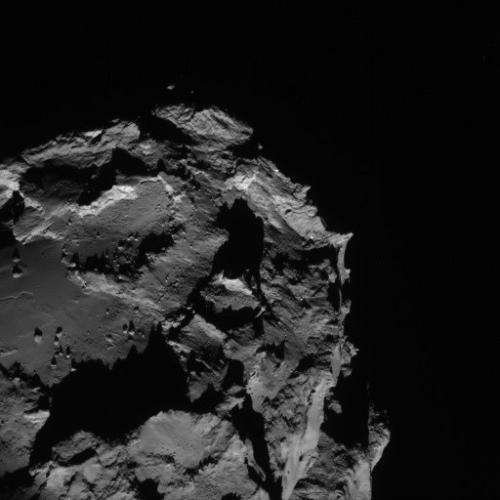Image: Rosetta's comet looms

Wow! Rosetta is getting ever-closer to its target comet by the day. This navigation camera shot from Aug. 23 shows that the spacecraft is so close to Comet 67P/Churyumov-Gerasimenko that it's difficult to fit the entire 2.5-mile (four-kilometer) comet in a single frame.
As the European Space Agency explained, the way that Rosetta is taking pictures is changing—and that's not only because the spacecraft is searching for a safe touchdown site for its lander, Philae.
"Until now, each NAVCAM image has covered the whole comet in one shot, but now that Rosetta is about 50 km [31 miles] from the comet, the nucleus is close to overfilling the NAVCAM field, and will do as we get even closer," ESA stated.
"As a result, on Saturday [Aug. 23] we started taking NAVCAM image sequences as small 2 x 2 rasters, such that roughly one quarter of the comet is seen in the corner of each of the four images, rather than all in just one shot."
ESA also noted there is a delay of about 20 minutes between the first and last images in the sequence, during which time both the comet and Rosetta are moving. This changes how the shadows and other things on the comet appear. ESA hasn't yet made any software to create composite images, because it's not needed for navigation (the primary reason the camera is there.)
Source: Universe Today





















